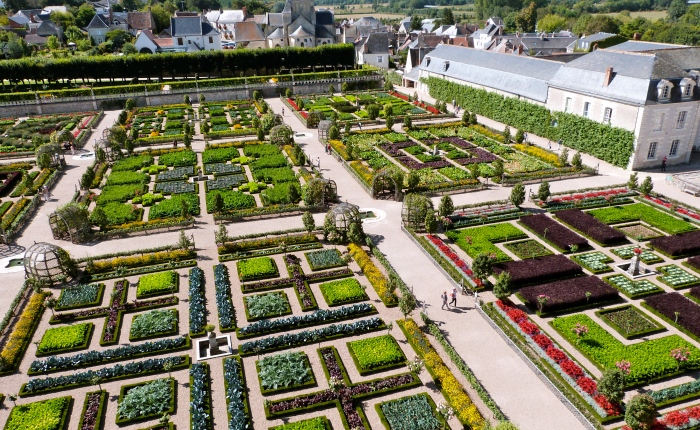Potager gardens have been in fashion since the medieval times in Europe, as practical kitchen gardeners that provided homes, palaces, and even monasteries with fresh produce. As the gardens gained popularity in France, gardeners began to blend practical functionality with aesthetic beauty and the modern potager was born. Combining beautiful designs into a traditional vegetable garden, potagers, especially well-maintained ones, should ideally yield both produce and even decorative flowers. And designing one is almost more fun than planting!
Since the potager is meant to maximize both beauty and production, potager gardens are often designed with symmetry, color, texture, as well as architectural and water features in mind. Factors to consider include vertical plants for dimension, a focal point, beautiful edging, and seasonal changes. As spring turns into winter, incorporating seasonal themes can yield charming designs.
Although currently, my gardening space is a little too small for a formal potager, I decided to try my hand at designing one, both for the fun of it and with the goal of implementing some of these designs as soon as I can. Since I work full-time all week, I’d describe my gardening style as pretty no-fuss because chances are I don’t have the time (or energy at the end of the day) to nurse my plants too much. Considering this factor I decided to blend a style of cottage garden and potager, or a cottager if you will – combining flowers and plants that can look beautiful even when unattended for a week.

In this example, my focus is a bird bath surround by symmetrical garden beds and paved walkways. The beds each have their unique design but using some of the same plants in each bed and keeping the color theme consistent makes the design from looking chaotic. This design was made with spring and summer vegetables in mind but it could easily be transformed in the fall and winter with different colors and textures.
It also incorporates flowers like marigolds, nasturtiums, and calendula to attract pollinators and help with pest control. Two potted fig trees by the cucumber trellis make a clear division of where the garden would begin, separating it from the rest of the yard. The goal is to garden like normally, but with a bit more thought into the beauty of the place. Instead of simple chard, the candy color variety would bring more color, same with unique varieties of cabbage, basil, heirloom tomatoes, and flowers, which many gardeners also incorporate into their gardens.
Architectural elements and water features help to move beyond simple row planting, and make sure you also plant climbers like beans, zucchini, and peas. Water features tend to attract pollinators and birds which are excellent pest-deterrents and amazing additions to anyone looking to improve their organic gardening system.
The potager is one of many gardening styles, and arguably one of the most beautiful. Although thankfully, the formal rules of medieval France are no longer followed, it does still bring a sense of organization to the chaos that often overtakes vegetable patches. While I look forward to having the space and time to take care of my own, I’m happy learning my lessons in a more forgiving garden!

